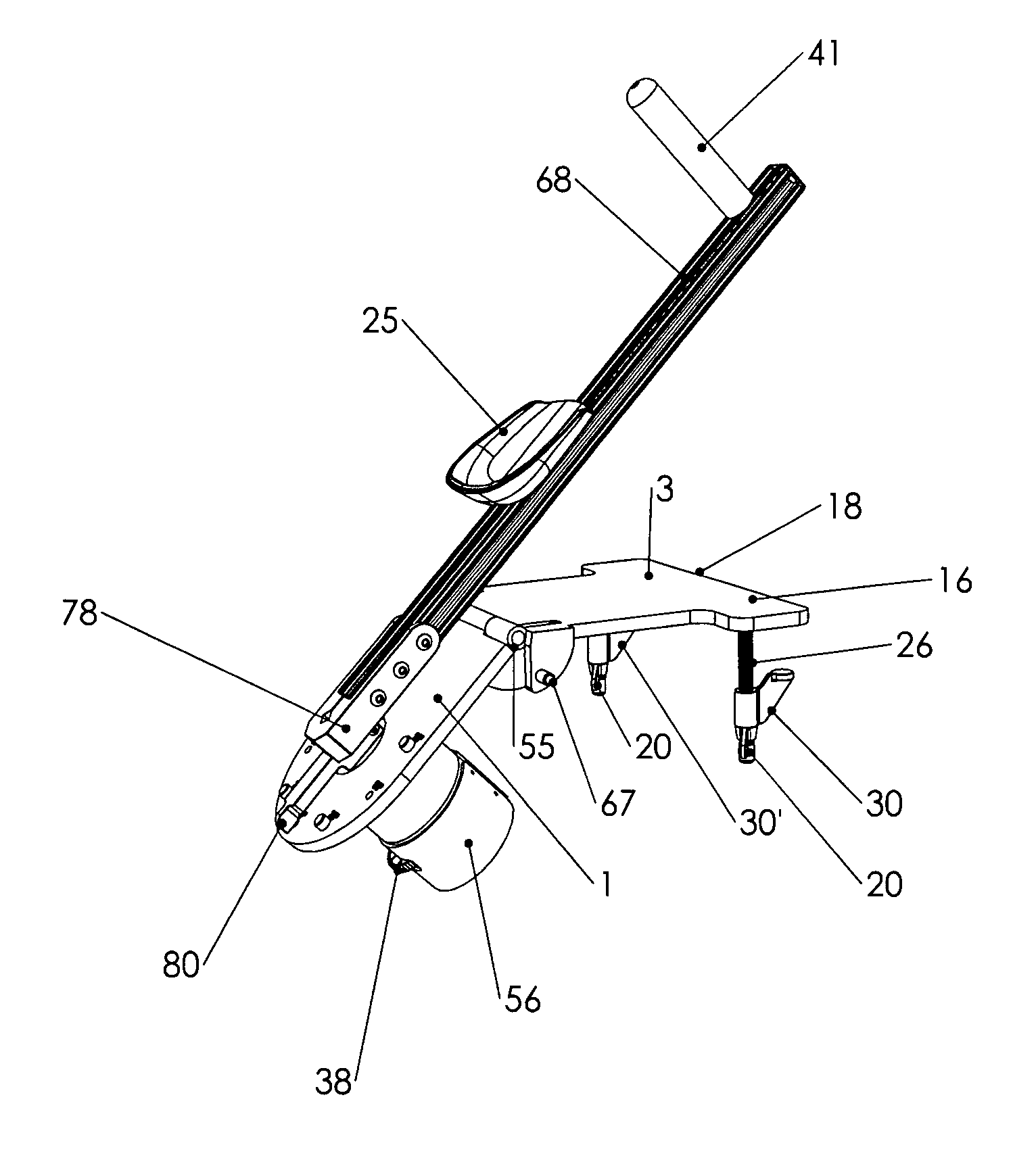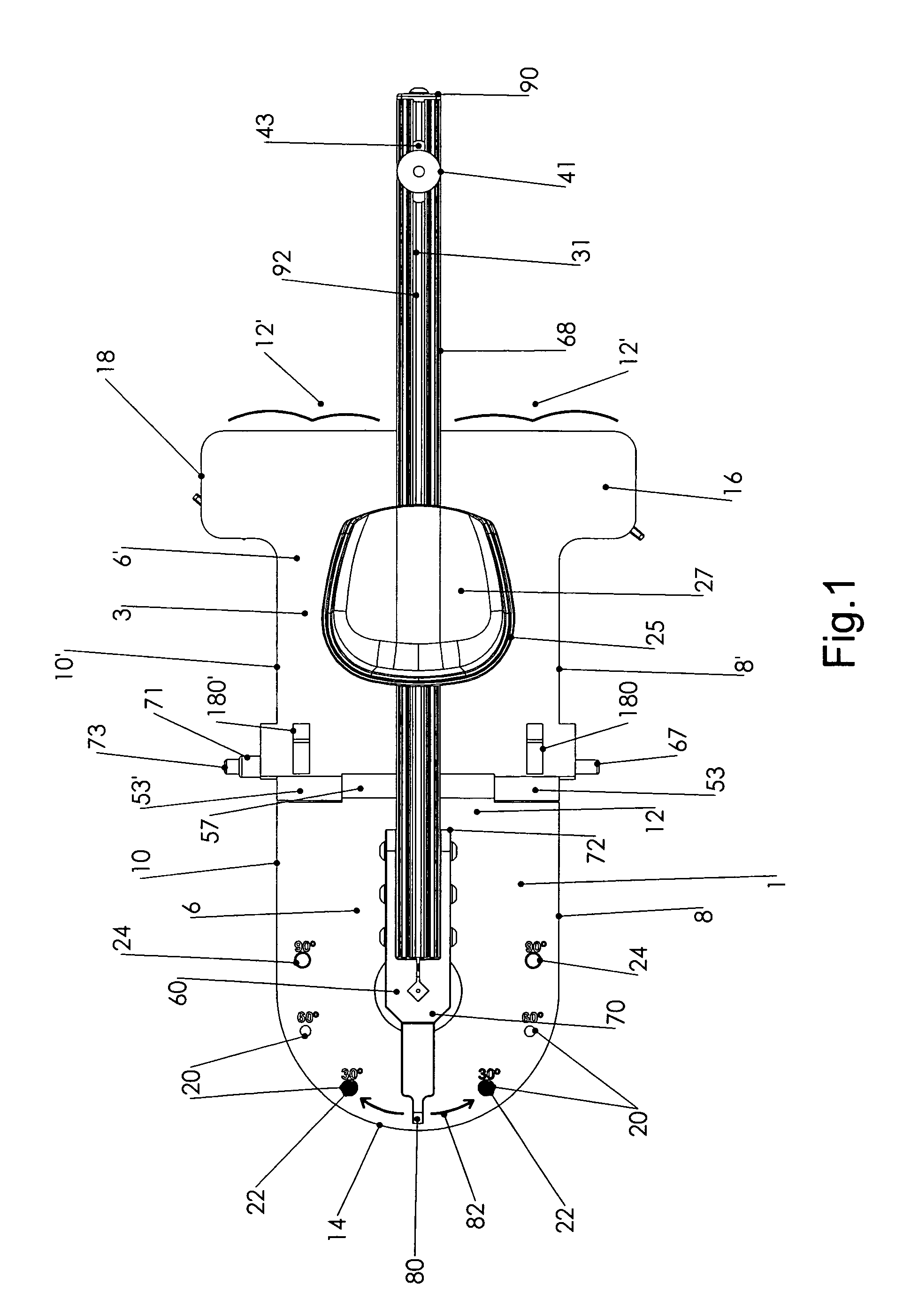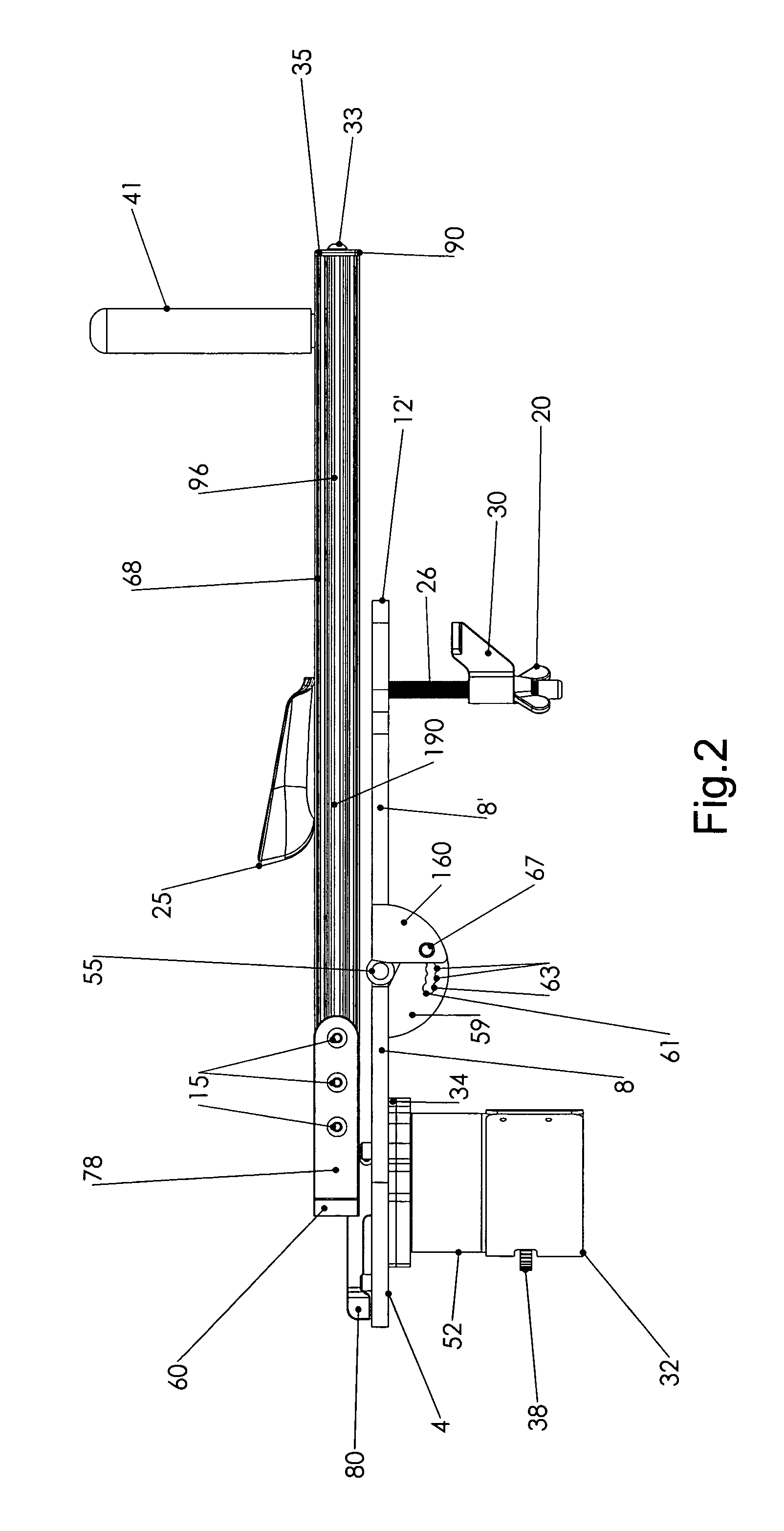Shoulder rehabilitation and exercise device
a shoulder and exercise technology, applied in the field of shoulder rehabilitation and exercise equipment, can solve the problems of pain, inflammation and loss of motion, and each of the muscles of the rotator cuff is susceptible to injury, and achieve the effects of increasing resistance, simple increasing force, and increasing rotation speed
- Summary
- Abstract
- Description
- Claims
- Application Information
AI Technical Summary
Benefits of technology
Problems solved by technology
Method used
Image
Examples
Embodiment Construction
[0081]The drawing FIGS. (1-13) illustrate a preferred embodiment of the shoulder therapeutic and exercise device of the present invention which incorporates an articulating two section base plate. As illustrated in the figures, the base plate is configured as separate proximal 1 and distal 3 sections. The proximal base plate section has a lower planar surface 4, an upper planar surface 6, a right edge 8 a left edge 10 a distal portion 12 and a proximal portion 14. Likewise, the distal base plate section has a lower surface 4′, an upper surface 6′, a right edge 8′ a left edge 10′ a distal portion 12′ and a proximal portion 14′. The two section base plate may also be described as having a longitudinal axis running from the proximal to distal portions of each section of the base plate, along the midline thereof, the longitudinal axis of each base plate aligned with one another when the planar upper and planar lower surfaces of the base plates are also aligned, one with the other along ...
PUM
 Login to View More
Login to View More Abstract
Description
Claims
Application Information
 Login to View More
Login to View More - R&D
- Intellectual Property
- Life Sciences
- Materials
- Tech Scout
- Unparalleled Data Quality
- Higher Quality Content
- 60% Fewer Hallucinations
Browse by: Latest US Patents, China's latest patents, Technical Efficacy Thesaurus, Application Domain, Technology Topic, Popular Technical Reports.
© 2025 PatSnap. All rights reserved.Legal|Privacy policy|Modern Slavery Act Transparency Statement|Sitemap|About US| Contact US: help@patsnap.com



